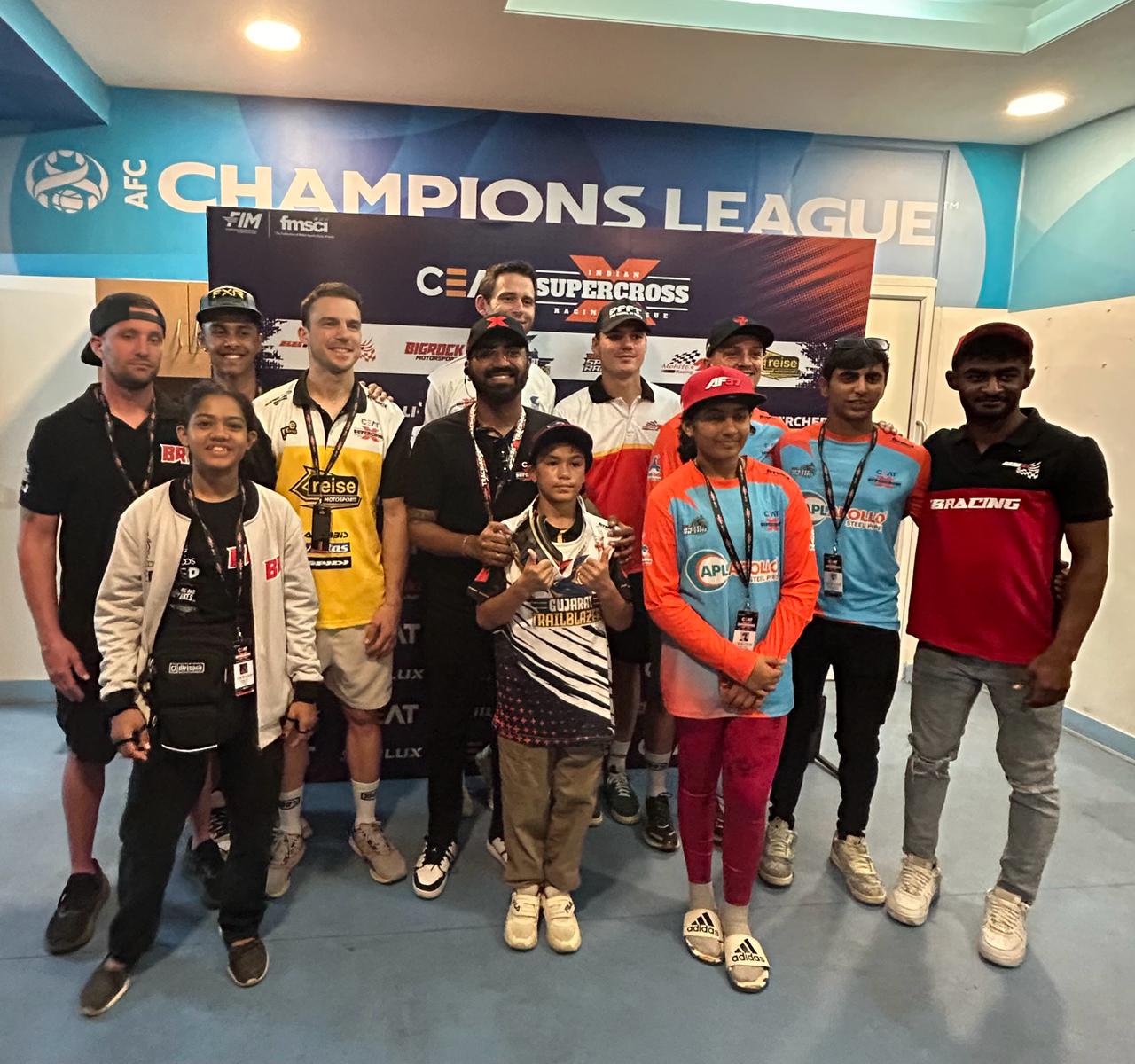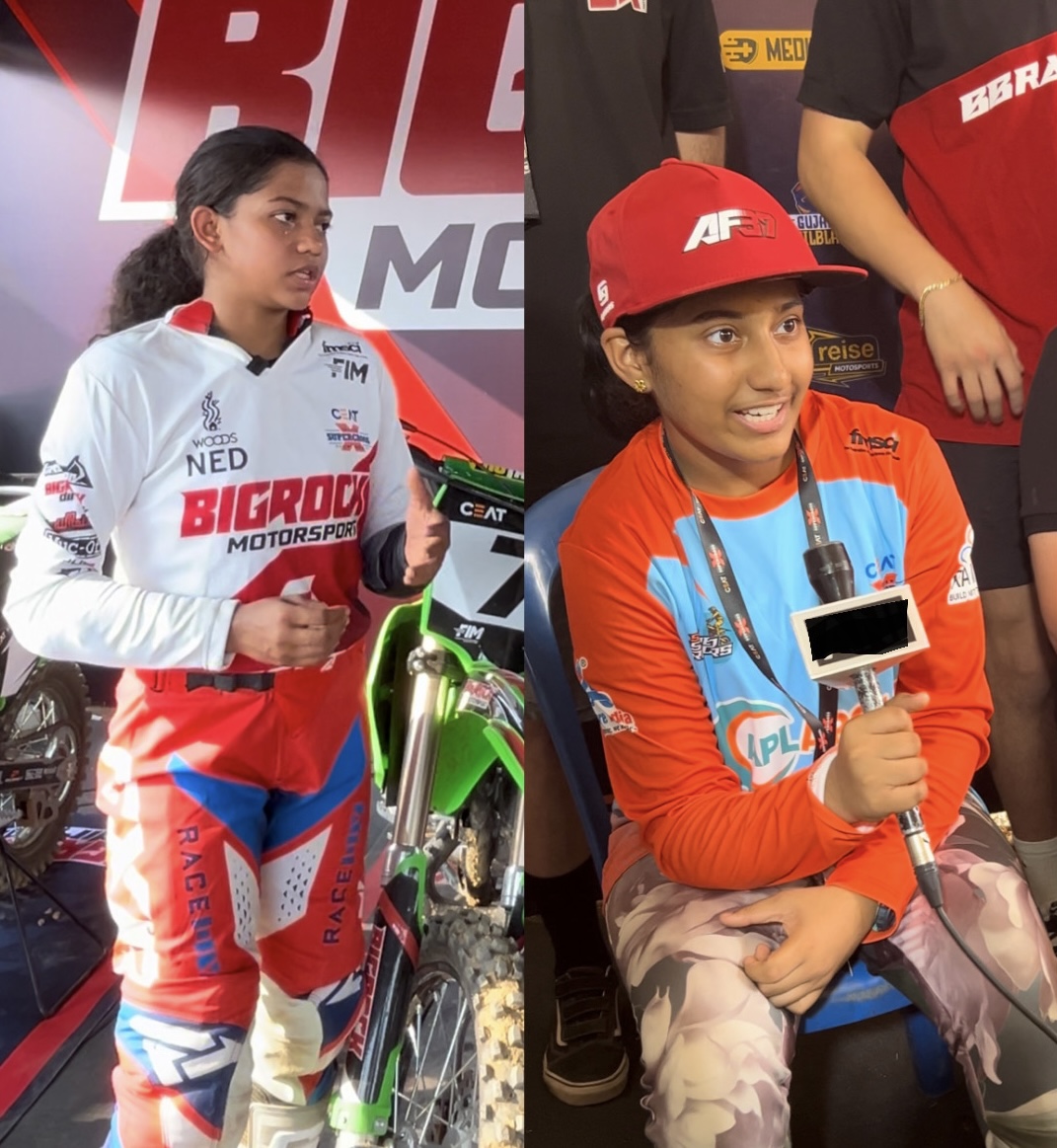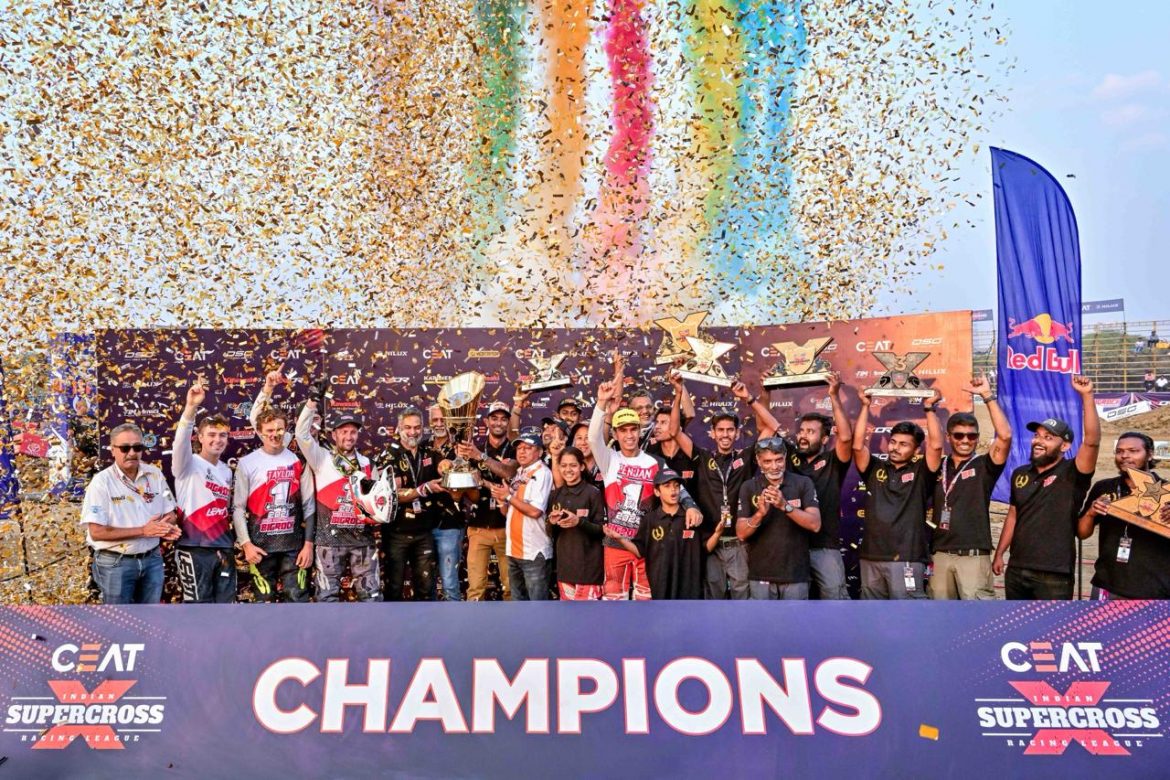The first season of the CEAT Indian Supercross Racing League just culminated with a bang in Bangalore. The grid featured a coveted line-up of talented racers from all over the world including the nine-time Australian MX and SX champion Matt Moss, four-time Italian SX champion Lorenzo Camporese, four-time South African champion Anthony Raynard and from India, we had the three-time national champion Rugved Barguje, among others.
If the scarcity of women in the roster surprises you– don’t fret. The league had not one but two talented female riders in the 85cc Junior India-Asia Mix category – Aleena Shaikh (SG Speed Racers) and Nithila Das (BigRock Motorsports).

Photo Credits: WION Drive
Let’s admit, you are perhaps more surprised by their presence than you would be by their absence. If that is the case, it’s not entirely your fault. According to a sobering report published by More Than Equal (MTE) in June 2023, Inside Track: Exploring the Gender Gap in Motorsport, the global female participation is critically low – a measly 7-13% on average across all levels of competition.
The report also revealed that women rarely rank in the top 20% of any category and are twice as likely to finish in the bottom 10% compared to their male peers. The data presents a rather discouraging picture for aspiring young women with a fascination for motorsports. But why?
Is it because women are physically at a disadvantage when it comes to motorsport or is it the lack of female-specific training?
Is the motorsporting culture testosterone-fueled or has it been structured to make it inaccessible/inappropriate for women?
Is the lack of women at the top of the grid a testament to their potential or a case of selective investment at a formative stage?
To find answers to some of these questions, we asked Aleena Shaikh and Nithila Das about their experience as the only two female riders in the Indian Supercross Racing League and this is what they had to say,
“Even though the ratio is skewed, I’m proud that I’m one of the only two women competing in the race. The race is beyond gender binaries. It doesn’t matter if you’re a girl or a boy, your performance is what matters at the end of the day. There’s nothing that boys can do and girls can’t” said Nithila.
When asked about their role models, both Aleena and Nithila paused before confessing that they did not have any female role models growing up. Identifying this gap, Nithila was quick to assert that more than finding a role model, she is currently focused on becoming a role model for other young girls looking for a path to emulate.
On the other hand, Aleena simply looked at her sister and expressed how she would love for her younger sisters to follow her lead and experience the thrill of the track with her.

(L-R) Nithila Das & Aleena Shaikh ; Photo Credits: WION Drive
While these young female riders still have a lot many whoop-dee-doos to conquer, the sport needs to be made just as accessible for them as men. And for that to happen, there is an urgent need to remove any physical, psychological and financial barriers to enter and simultaneously showcase the other opportunities available in strategic positions within motorsport for women to believe it can be an equal world.
During the inaugural race in Pune, when asked about the absence of female riders on the grid and what are the future plans to make this sport more accessible for women, Eshaan Lokhande, Director & Co-Founder of the CEAT ISRL, promptly highlighted that the roster featured not one but two female riders and added,
“We aim to introduce a women’s category, providing the opportunity to anyone who loves to ride, regardless of gender. If you need a platform, we are here.”
While Lokhande made a reassuring claim, the absence of female riders in categories other than the 85cc Junior India-Asia Mix remains an area of concern. Not only is it robbing young female riders like Aleena and Nithila of aspirational role models unlike their male counterparts, but it’s also fracturing the potential fanbase of this emerging motorsport in the Indian landscape. Female fans are more likely to engage with the league if it has a more prominent female participation which would in turn make the overarching narrative more inclusive.
According to the MTE report, “The cost of competing is a universal challenge to both men and women, but too few investors and sponsors are willing to take a chance on female drivers early in their careers, preventing their progress at crucial periods.” This perpetuates a vicious cycle of limited opportunities and early retirements, exacerbating the gender performance gap in motorsport.

Photo Credits: WION Drive
With a massive gender performance gap between male and female riders, women are reportedly abandoning their racing careers much earlier than their male counterparts, thus continuously reducing the chances of a female ever competing in top levels of the sport. The research also found that,
“Based on the current numbers, without significant intervention, the chances of a woman ever reaching the top is incredibly small”.
While the first season of the CEAT Indian Supercross Racing League highlighted the noticeable gender gap that is still plaguing motorsports. The high-octane competition also showcased the immense promise of our young female riders. Both Aleena and Nithila proved women can go throttle-to-throttle with male racers when given a chance.
Now we must build upon their success to inspire more girls to take to the track. With expanding access, investments and mentorship opportunities, India can pave the road toward gender equality in motorsports’ top ranks.



